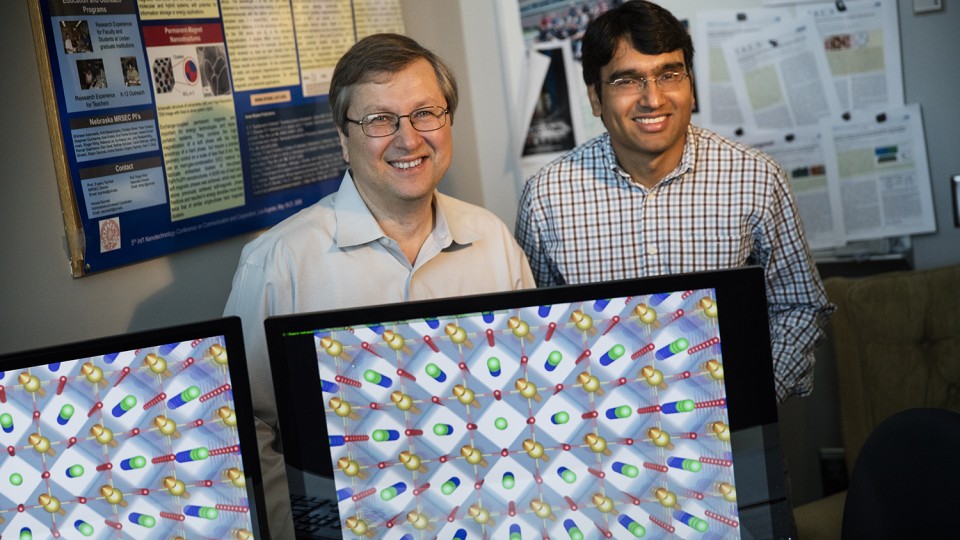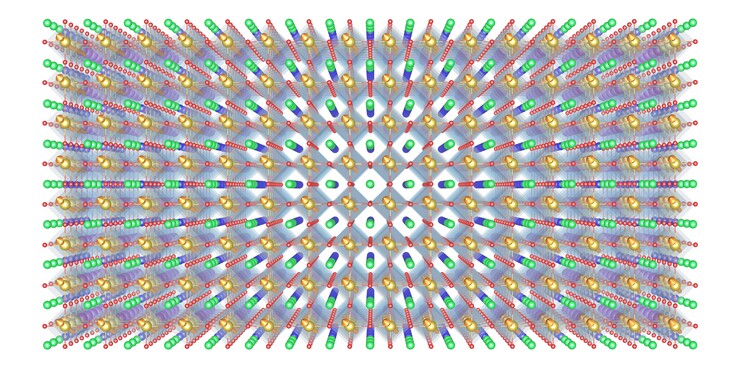· 2 min read
Physicists explain magnetic threshold of ultra-thin material

A pair of University of Nebraska-Lincoln researchers have determined why “6” is the magic number for an atomically thin material as part of a collaborative study spanning three continents and the pages of the journal Science.
Published Aug. 14, the study found that a compound called lanthanum manganite features only the faintest trace of magnetism when it’s grown up to five atoms thick. Adding a sixth atomic layer, however, imbues the material with magnetic patches roughly 100 times stronger than those detected in its thinner cousins.
To explain this sudden emergence of magnetism, UNL physicists Evgeny Tsymbal and Tula Paudel used the Holland Computing Center to model the material’s properties and behavior.
Tsymbal and Paudel concluded that the sixth layer leads to a restructuring of the compound’s electrons, which migrate from the top of the material to its bottom. These electrons then become confined between the material and the substrate on which it is grown, according to Tsymbal, ultimately producing magnetism in a molecular arrangement that does not typically exhibit it.
Magnetic materials are used prominently in data-storage devices that feature random-access memory, which stores the binary language of 1s and 0s in the form of magnetization patterns that can be read and rewritten. The study’s findings could consequently inform the future production of computational components, Tsymbal said.
“Making magnetically sensitive films thinner – and maintaining the ability to manipulate magnetism at the ultimate atomic scale – are critical to extending the information technology revolution,” said Tsymbal, who directs UNL’s Material Research Science and Engineering Center.
The study was led by scientists from the Netherlands-based University of Twente and the National University of Singapore, with researchers from Stanford University and the Ireland-based Trinity College also contributing.








